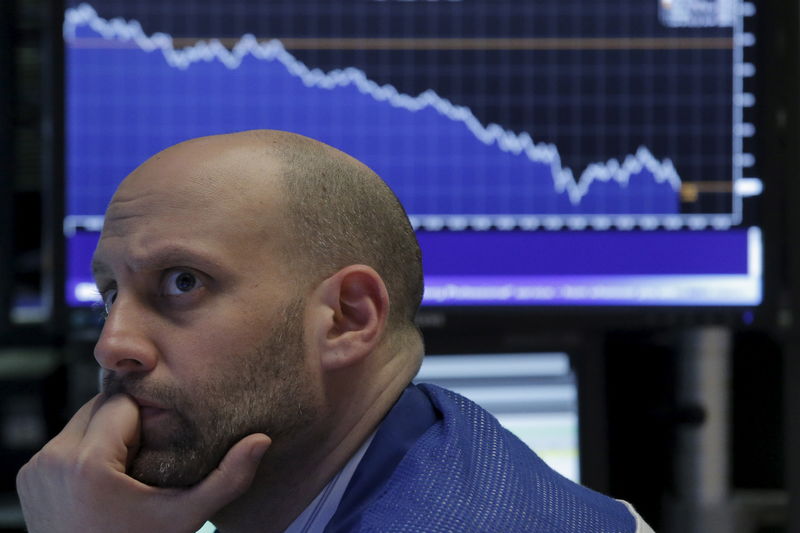Wall St mixed as investors assess earnings; oil, chips fall

By Lisa Pauline Mattackal and Purvi Agarwal
(Reuters) – The S&P 500 and the Nasdaq edged higher while the Dow dropped on Tuesday, with the benchmark index hovering near record highs as investors parsed a mixed set of quarterly results from companies such as UnitedHealth (NYSE:UNH) and Bank of America.
At 09:49 a.m. the Dow Jones Industrial Average fell 222.22 points, or 0.52%, to 42,843.00, the S&P 500 gained 4.97 points, or 0.08%, to 5,864.82 and the Nasdaq Composite gained 34.53 points, or 0.19%, to 18,537.21.
Eight of the 11 S&P 500 sectors trended upwards, with Financials among top gainers with a 0.6% rise, after several major banks reported results, adding to optimism after a set of positive earnings from institutions including JPMorgan Chase (NYSE:JPM) last week.
Bank of America jumped 2.2% following a third-quarter profit beat, while Charles Schwab (NYSE:SCHW) soared 7.8% after beating estimates. The broader Banks index was trading at its highest level in more than two years.
However, Citigroup slipped 1.5% after its results, while Goldman Sachs dipped 0.4%, both reversing premarket gains.
“The financial sector (is) experiencing upward revisions to third-quarter earnings estimates, but it’s going from a low single digit gain to a mid-single digit gain – certainly not knocking the ball out of the park,” Stovall said.
Meanwhile, the blue-chip Dow opened at a record high but quickly fell, weighed down by an 8.8% slump in health insurer UnitedHealth after the company reported a surge in medical costs in the third quarter.
Energy stocks were down, with Exxon Mobil (NYSE:XOM) losing 3.1% and Occidental Petroleum (NYSE:OXY) shedding 3.4%, as crude prices dropped 4%.
Growth stocks were broadly mixed, with AI-darling Nvidia (NASDAQ:NVDA) falling 1.6% following a record high close on Monday, after a report the U.S. is considering limiting exports of advanced artificial intelligence chips from the company and other U.S. peers to some countries. Apple (NASDAQ:AAPL) jumped 2.5%.
“Nothing has really happened just yet to offer any good guidance for investors,” said Sam Stovall, chief investment strategist at CFRA Research.
A number of S&P 500 companies are scheduled to report results through the week. The large ones will have to justify their expensive stock valuations, particularly in the tech sector, where valuations have grown increasingly inflated in the past year.
Boeing (NYSE:BA) rose 0.4% after the planemaker filed to raise up to $25 billion through a stock and debt offering and entered into a $10 billion credit agreement amid a crippling strike and upcoming debt maturities.
Walgreens Boots Alliance (NASDAQ:WBA) soared 13.6% after narrowly beating Wall Street’s lowered estimates for fourth-quarter adjusted profit.
Traders are pricing in about an 88% chance the Fed will cut interest rates by 25 basis points in November and a slight probability it will leave rates unchanged, according to CME’s FedWatch.
Speeches from Federal Reserve officials Adriana Kugler, Mary Daly and Raphael Bostic are also on deck, while economic data including the monthly retail sales figures is due on Thursday.
Advancing issues outnumbered decliners by a 1.48-to-1 ratio on the NYSE, and by a 1.14-to-1 ratio on the Nasdaq.
The S&P 500 posted 81 new 52-week highs and no new lows, while the Nasdaq Composite recorded 68 new highs and 20 new lows.




